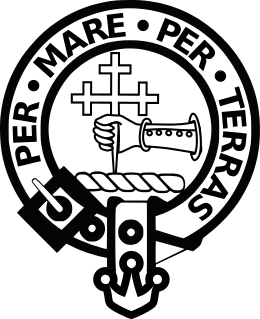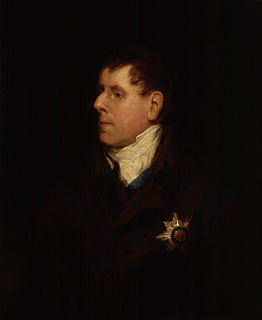 W
WThe Highland Clearances were the evictions of a significant number of tenants in the Scottish Highlands and Islands, mostly from 1750 to 1860.
 W
WGustavus Aird (1813–1898) was a Scottish minister of the Free Church of Scotland who served as Gaelic Moderator of the General Assembly in Inverness in 1888. He was an active campaigner against the Highland Clearances.
 W
WBadbea is a former clearance village perched on the steep slopes above the cliff tops of Berriedale on the east coast of Caithness, Scotland. Situated around 5 miles (8 km) north of Helmsdale, the village was settled in the 18th and 19th centuries by families evicted from their homes when the straths of Langwell, Ousdale and Berriedale were cleared for the establishment of sheep farms. The last resident left the village in 1911 and a monument was erected by the son of former inhabitant, Alexander Robert Sutherland, who had emigrated to New Zealand in 1839. Today, the ruins of the village are preserved as a tourist attraction and memorial to the Highland Clearances.
 W
WBen Bhraggie is a hill in Scotland which rises to an elevation of 397 metres (1,302 ft) above sea level. The hill dominates the skyline above the village of Golspie and is visible from many parts of east Sutherland. The 100-foot-tall (30-metre) statue which is perched on top is that of George Leveson-Gower, Marquess of Stafford and first Duke of Sutherland who became notorious through the part he played in the Highland clearances.
 W
WButcher's Broom is an epic, historical novel by Neil M. Gunn written in 1934. Based on a semi-fictionalised account of the Highland Clearances in Sutherland, the novel deals with the decline of Highland culture in a wide scope of pre-Clearance and post-Clearance life, as well as the Clearances themselves.
 W
WThe Cheviot, the Stag and the Black, Black Oil is a play written in the 1970s by British playwright John McGrath. From April 1973, beginning at a venue in Aberdeen, it was performed in a touring production in community centres on Scotland by 7:84 and other community theatre groups. A television version directed by John Mackenzie was broadcast on 6 June 1974 by the BBC as part of the Play for Today series.
 W
WClan Macdonald of Sleat, sometimes known as Clan Donald North and in Gaelic Clann Ùisdein [kʰl̪ˠan̪ˠ ˈuːʃtʲɛɲ], is a Scottish clan and a branch of Clan Donald — one of the largest Scottish clans. The founder of the Macdonalds of Sleat was Ùisdean, or Hugh, a 6th great-grandson of Somerled, a 12th-century Lord of the Isles. The clan is known in Gaelic as Clann Ùisdein, and its chief's Gaelic designation is Mac Ùisdein, in reference to the clan's founder. Both the clan and its clan chief are recognised by the Lord Lyon King of Arms, who is the heraldic authority in Scotland.
 W
WThe Hielanman's Umbrella is a landmark in the centre of Glasgow, Scotland. It is the local Glaswegian nickname for the glass walled railway bridge which carries the platforms of Glasgow Central station across Argyle Street. It is built in Victorian style.
 W
WThe Highland and Island Emigration Society was a charitable society formed to promote and assist emigration as a solution to the Highland Potato Famine.
 W
WThe first Highland Land League emerged as a distinct political force in Scotland during the 1880s, with its power base in the country's Highlands and Islands. It was known also as the Highland Land Law Reform Association and the Crofters' Party. It was consciously modelled on the Irish Land League.
 W
WJames Loch was a Scottish advocate, barrister, estate commissioner and later a member of parliament.
 W
WSir John Lockhart-Ross, 6th Baronet, known as John Lockhart from 1721 to 1760, was an officer of the Royal Navy who saw service during the War of the Austrian Succession, Seven Years' War, and the American War of Independence, and served for a time as a Member of Parliament.
 W
WColonel Alexander Ranaldson MacDonell of Glengarry, sometimes called by the Gaelic version of his name, Alastair or Alasdair, was clan chief of Clan MacDonell of Glengarry. As was customary for a laird, MacDonell was often called Glengarry after his principal estate.
 W
WDuke of Sutherland is a title in the Peerage of the United Kingdom which was created by William IV in 1833 for George Leveson-Gower, 2nd Marquess of Stafford. A series of marriages to heiresses by members of the Leveson-Gower family made the Dukes of Sutherland one of the richest landowning families in the United Kingdom. The title remained in the Leveson-Gower family until the death of the 5th Duke of Sutherland in 1963, when it passed to the 5th Earl of Ellesmere from the Egerton family.
 W
WElizabeth Sutherland Leveson-Gower, Duchess of Sutherland, also suo jure 19th Countess of Sutherland, was a Scottish peer from the Leveson-Gower family, best remembered for her involvement in the Highland Clearances.
 W
WGeorge Granville Leveson-Gower, 1st Duke of Sutherland KG, PC, known as Viscount Trentham from 1758 to 1786, as Earl Gower from 1786 to 1803 and as The Marquess of Stafford from 1803 to 1833, was an English politician, diplomat, landowner and patron of the arts from the Leveson-Gower family. He was the wealthiest man in Britain during the latter part of his life. He remains a controversial figure for his role in the Highland Clearances.
 W
WUlva is a small island in the Inner Hebrides of Scotland, off the west coast of Mull. It is separated from Mull by a narrow strait, and connected to the neighbouring island of Gometra by a bridge. Much of the island is formed from Cenozoic basalt rocks, which are formed into columns in places.